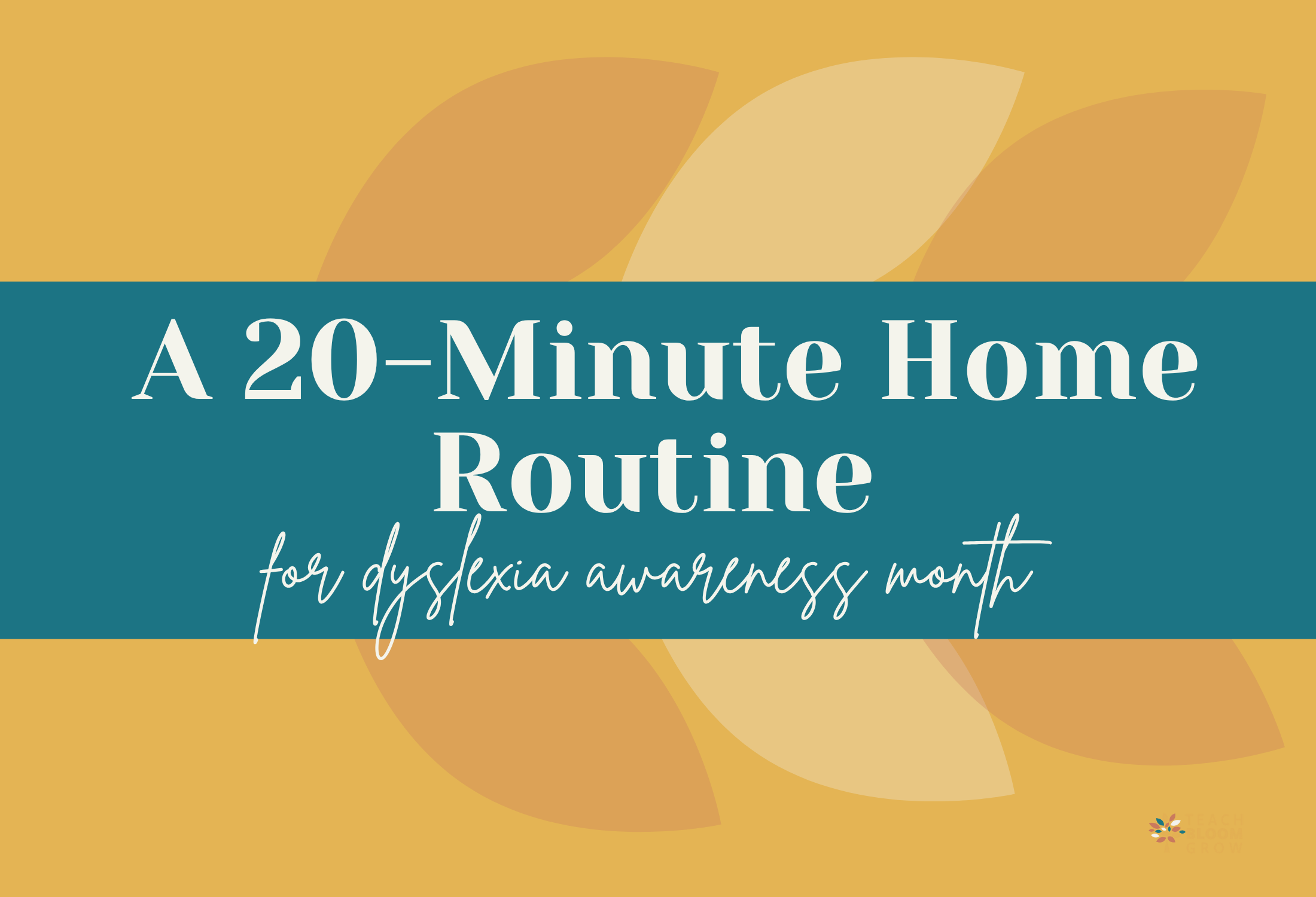A 20-Minute Home Routine for Dyslexia Awareness Month
October is Dyslexia Awareness Month. So this is a great time to shine a light on the 1 in 5 children who struggle with reading, writing, and spelling (Shaywitz 32). As a mom and Structured Literacy Dyslexia Specialist, I know how discouraging it can feel. You've likely watched your child avoid books or have multiple meltdowns during homework. But here’s the encouraging part: you don’t need to force hours of drills or stressful evenings on your children. With just 20 minutes a night, you can create a simple, and effective reading routine. A routine that will also support your child’s brain, boost confidence, and reinforce the structured literacy approach used in evidence-based intervention programs.
The purpose of this post is to give you straightforward reading strategies you can start using right away. I’ll show you what a consistent 20-minute reading routine can look like. A reading routine can be so impactful, especially for children with dyslexia or those who are struggling with reading. This approach is simple, doable, and designed to make steady progress without being overwhelming.
Why 20 Minutes Works
You may be wondering why is 20 minutes the “sweet spot?” Well, it’s short enough to keep kids engaged without overwhelming them, yet long enough to build meaningful progress. A consistent reading routine helps create a daily habit, which is far more effective than occasional marathon sessions that leave everyone drained. In that small amount of time, you can target exactly what struggling readers need. The following sections outline my recommended 20 minute home reading routine.
1.Oral Warmup
Begin with about three minutes of oral warmup, no books required. This is a chance to play with sounds. This builds phonemic awareness, which is a strong predictor of reading success (National Reading Panel 2; Ehri et al. 252). Try simple activities like swapping sounds (cat → hat), clapping syllables in family names, or blending sounds slowly (“/s/… /t/… /o/… /p/”) followed by letting your child say the word (stop). You can even pair this with a few deep breaths to calm the body and focus the mind. A short warmup primes the brain for reading and reinforces foundational skills in a fun, stress-free way.
2. Decodable Readers
Next, spend about seven minutes using decodable readers. This is going to be the heart of your structured literacy routine. Decodable readers are short books or passages carefully written only with the phonics skills your child has already learned. If they’ve been introduced to short vowels already, the story will focus on simple words like cat, map, and Sam, with a few sight words they already know mixed in (E.g. the, is.) For example: “Sam had a cat. The cat sat. Sam sat.” It may seem basic, but this is exactly why they work. Unlike traditional leveled readers that often include words beyond a child’s skill level, decodable texts ensure your child can actually sound out every word.
Decodable readers allow struggling readers to feel success and practice exactly what their brain is ready for. Research shows that decodable texts aligned to phonics instruction significantly improve accuracy and word recognition for beginning and struggling readers (Cheatham and Allor 388; Shanahan).
Tip: Ask your child’s teacher or tutor which phonics pattern they are focusing on and choose a decodable book that matches!
3. Morphology Moment
Spend about five minutes exploring morphological awareness. This is the study of word parts. Strong morphology skills boost vocabulary and comprehension development (Carlisle 84).
One way to do this is to choose a single prefix, suffix, or root word each week. For example, the root “tele” means “far.” Brainstorm related words like telephone, telescope, and television. As the week goes on, look for these words in books, shows, or around the house. Turning this into a “word hunt” helps children connect reading to the real world while making vocabulary fun and memorable.
4. Fluency Wrap-Up
Finally, I would suggest using the final five minutes for fluency practice. A great way to do this is to take yesterday’s passage, or a favorite poem, and time your child for one minute, marking how far they get. The next evening, reread the same text and celebrate any improvement. Repeated reading builds speed, accuracy, and expression, which are all key parts of fluency. This also gives kids an immediate confidence boost (Samuels 404). Over time, you’ll notice smoother, more natural reading.
What Progress Looks Like
If you stick to this 20-minutes a day reading routine, I guarantee you’ll start to see changes. After just a few weeks, you will likely notice: more confidence in sounding out words, smoother, quicker reading, stronger vocabulary, as well as less resistance to picking up a book. Always remember that every word your child decodes builds the foundation for lifelong reading. And don’t forget to celebrate all the small wins along the way!
Final Encouragement
Parents often say to me, “I’m not a teacher, I don’t know how to help.” But you don’t have to be a teacher to help your child develop these skills! With a concise plan, the right decodable texts, and consistency, you can give your child daily victories that lead to long-term growth.
This October, as we recognize Dyslexia Awareness Month, I would also like to spread hope: reading success is possible, one small step at a time.
Please feel free to get in contact by leaving me a comment below, or contacting me here.



